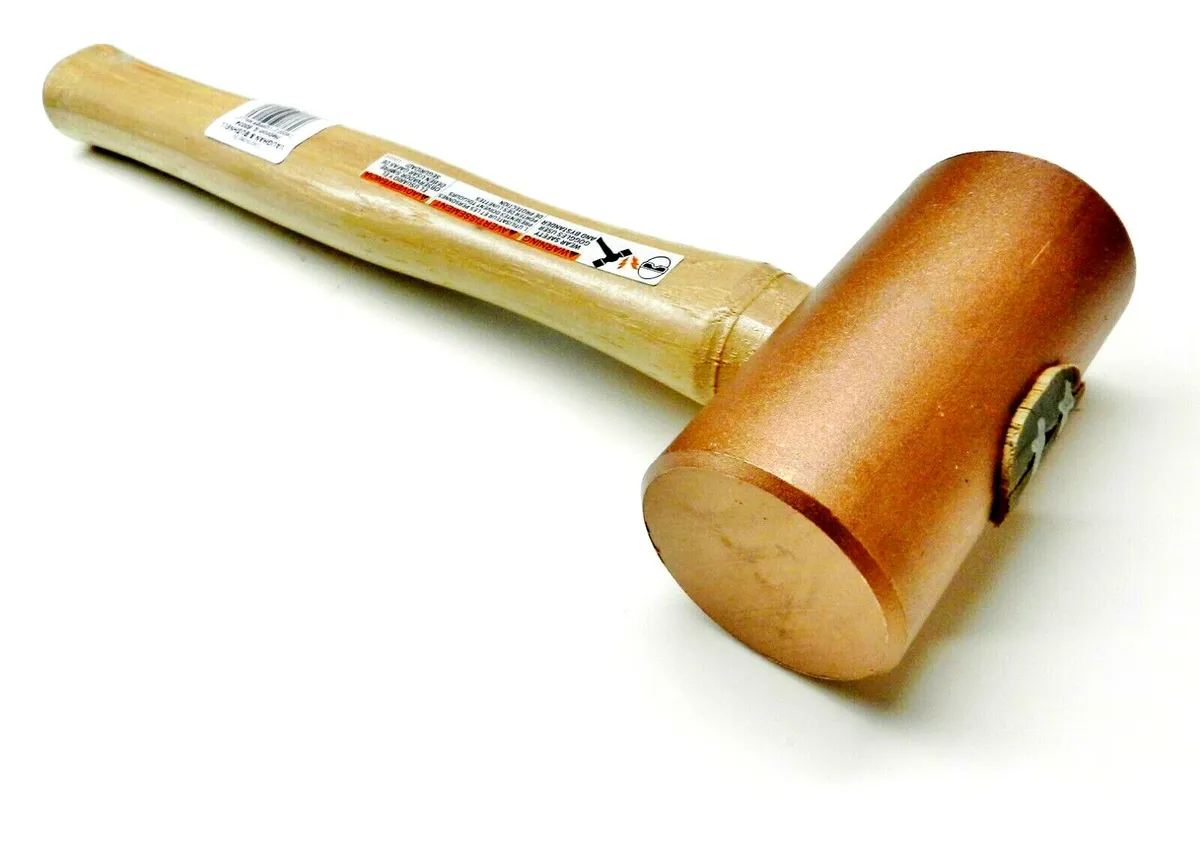Unveiling the Versatility of Copper Hammers: From Craftsmanship to Heavy-Duty Jobs
Copper hammers, with their distinctive reddish hue and solid build, have been a trusted tool for centuries. But what exactly are they for? Unlike their steel counterparts, copper hammers offer unique benefits and specific applications. Let's delve into the fascinating world of copper hammers and discover their diverse uses.
Unveiling the Advantages of Copper Hammers
1. Non-Sparking: Unlike steel hammers, copper hammers don't spark when struck against metal. This makes them ideal for working near flammable materials or in environments where sparks pose a safety hazard.
2. Soft Striking Surface: Copper's softer nature minimizes damage to delicate surfaces compared to harder metals. This makes them perfect for shaping and finishing metalwork without leaving unsightly marks.
3. Corrosion-Resistant: Copper's natural resistance to corrosion ensures longer lifespan and durability. They're less prone to rusting, even when exposed to moisture or harsh elements.
4. Reduced Rebound: Compared to steel, copper has a lower rebound, meaning the hammer head absorbs more of the impact force. This provides greater control and precision when hammering delicate objects.
Exploring Diverse Applications:
1. Jewelry Making: Copper hammers are essential tools for jewelry makers. Their non-sparking nature and soft striking surface allow for precise shaping and hammering of metal without damaging gemstones or delicate settings.
2. Metalworking: When working with sheet metal or other forms of metal, copper hammers are preferred for their ability to bend and shape the metal without leaving marks. This makes them ideal for creating intricate details and smooth finishes.
3. Leatherworking: Copper hammers are used in leatherworking to flatten and shape leather without damaging the material. Their non-marring surface ensures the leather remains smooth and pristine.
4. Automotive Repair: In automotive repair, copper hammers are used for tasks like removing dents and shaping panels without damaging the paint or underlying metal. Their soft striking surface prevents scratches and ensures a smooth finish.
5. Stonework: While not as common as other tools used in stonework, copper hammers are sometimes used for chiseling and shaping softer stones like alabaster or marble. Their softer nature minimizes damage to the stone and allows for finer control.
6. General Craftwork: Copper hammers are a versatile tool for various craft projects. They can be used for tasks like hammering rivets, setting nails, or shaping clay, making them a valuable addition to any craft toolbox.
Choosing the Right Copper Hammer
When choosing a copper hammer, consider the following factors:
- Weight: The weight of the hammer should be appropriate for the task at hand. Lighter hammers are better for delicate work, while heavier hammers are needed for heavier materials.
- Head Shape: Different head shapes are available for specific purposes. A ball-peen head is ideal for shaping metal, while a flat head is best for general hammering tasks.
- Handle Material: Choose a handle material that offers a comfortable grip and good shock absorption. Wood and fiberglass are popular options.
Conclusion:
Copper hammers, with their unique properties and diverse applications, are invaluable tools for craftworkers, metalworkers, and DIY enthusiasts alike. When choosing the right copper hammer, consider your specific needs and preferences to ensure you have the perfect tool for the job. So, whether you're shaping delicate jewelry, hammering metal for a project, or crafting your next masterpiece, a copper hammer can be your trusted companion on the path to creative success.
FAQs:
Q: Can I use a copper hammer for construction work?
A: While copper hammers can be used for some construction tasks, they are not generally preferred for heavy-duty work due to their softer nature. Steel hammers are better suited for such applications.
Q: How do I maintain a copper hammer?
A: To keep your copper hammer in good condition, wipe it clean after use and store it in a dry place. You can also use a polishing cloth to restore its shine.
Post time: 12-14-2023






